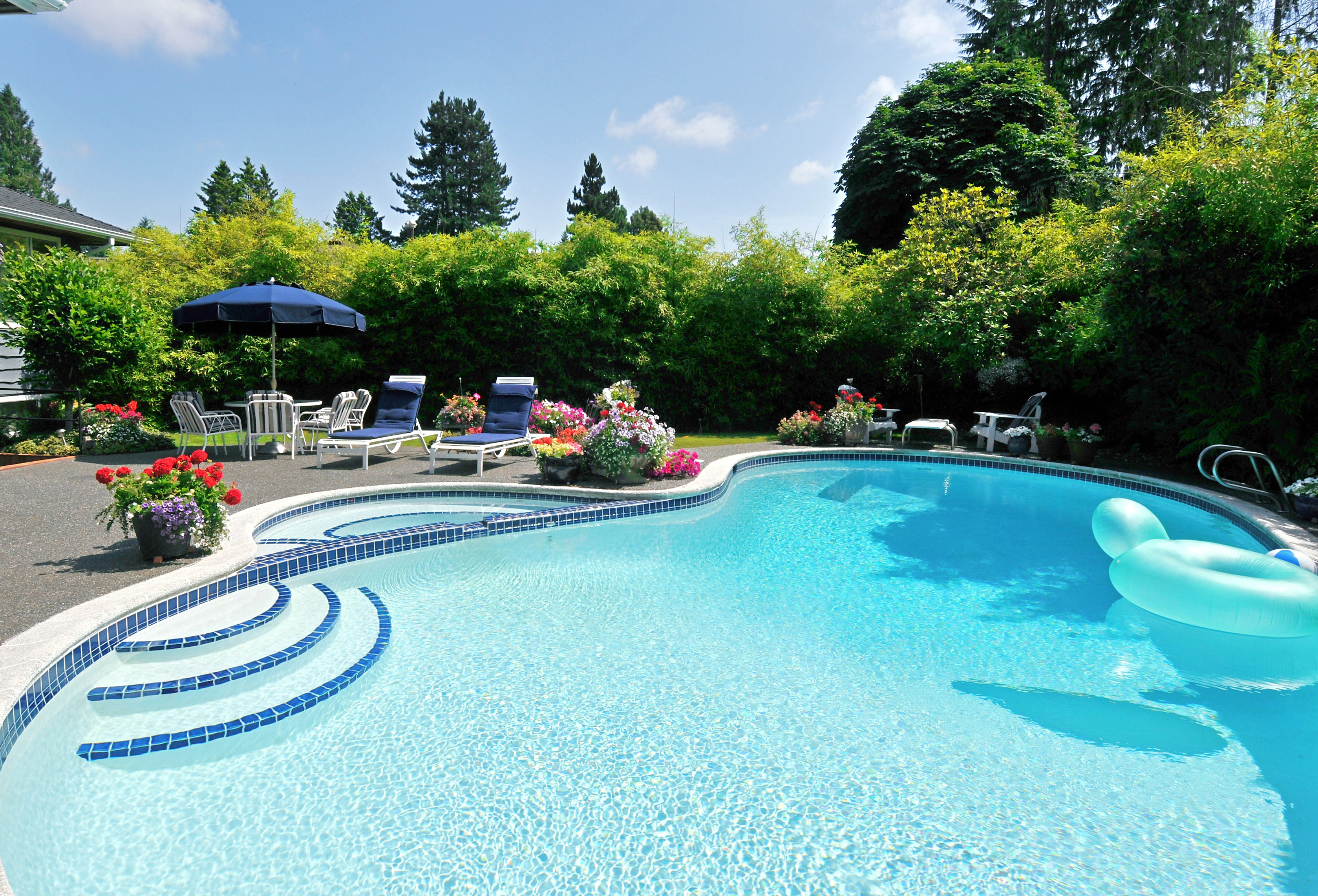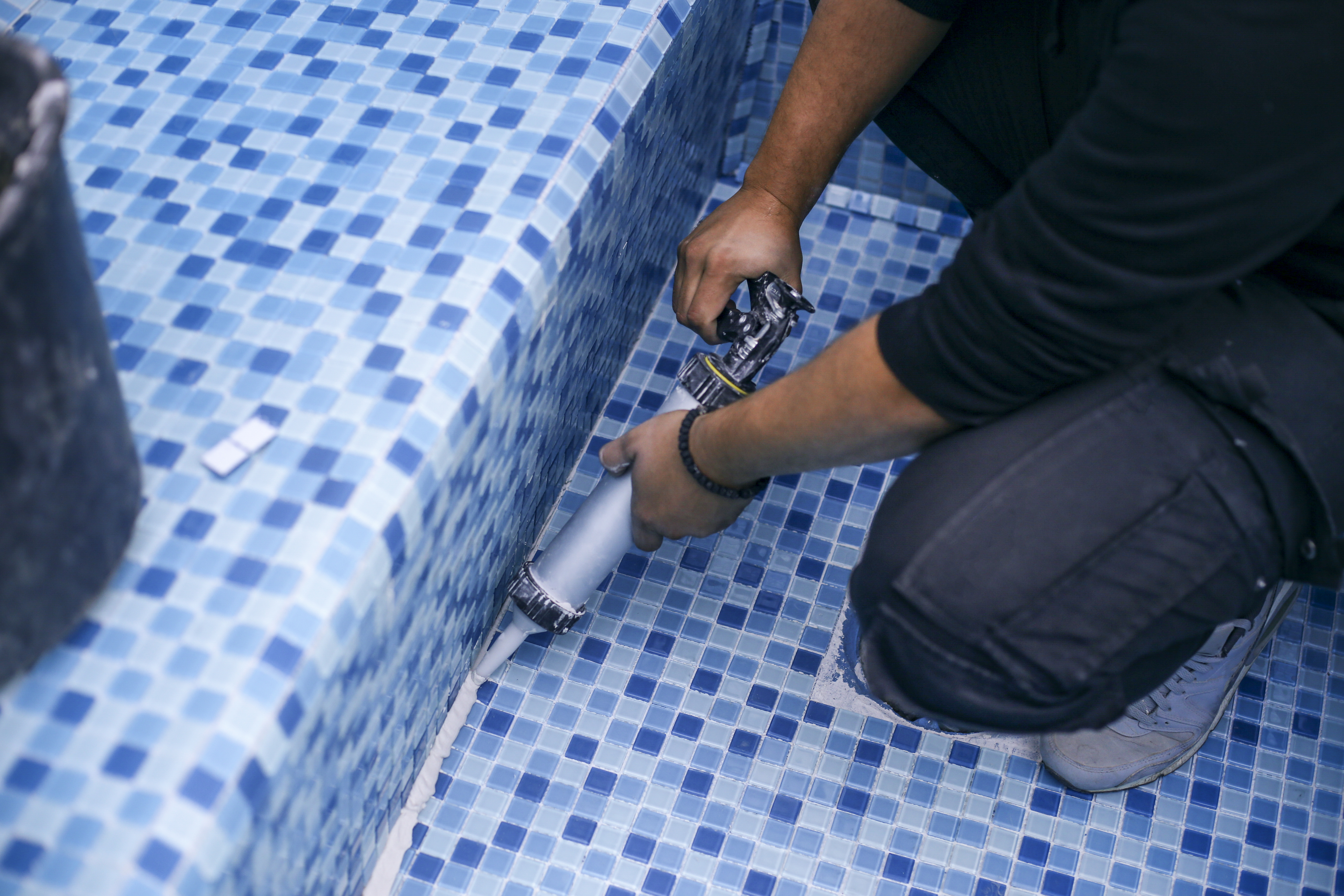
Is it time to treat yourself to backyard pool parties and late-night swims? Start with our guide, which answers the question: how much does it cost to build a pool?
Pool liner replacement in Minneapolis costs an average of $2,348, with most homeowners paying $1,339 to $3,861. A pool liner installer can assess the pool size and liner and give you a quote for the replacement costs.


Vinyl liners are able to handle Minneapolis’ freezing winters but eventually need to be replaced as they wear.
Pool liner replacement costs depend on the size and type of the pool liner as well as labor costs and permit fees.
A well-maintained pool can increase your home value in Minneapolis.
Minneapolis is known for cold winters, but the summers can get hot and humid, making a pool a great place to cool off. Keeping a pool in good shape requires budgeting for pool liner replacement costs, which average $2,348 in Minneapolis. Depending on different cost factors, homeowners can expect to pay between $1,339 and $3,861.
Learn how pool type, size, liner, and labor all impact the cost of a liner replacement so you can set your budget.
Your pro will determine your pool liner replacement costs based on different factors. The size and type of pool will dictate much of the cost, but material, labor, and liner thickness will add to the total.
Vinyl pools are the most common type of pool in Minneapolis, and in-ground pools are popular because they enhance a home’s aesthetic and offer a high level of customization. But aboveground pools are also common because they’re affordable and require less maintenance.
Replacing the pool liner in an in-ground pool will cost more than replacing the liner for an aboveground pool. In-ground pools have stairs and are larger than aboveground pools, making liner installation more labor-intensive. It costs between $500 and $900 for aboveground pool liner replacement and between $1,200 and $2,100 for in-ground pool liner replacement.
Pool size plays a major role in the cost to replace a pool liner in Minneapolis because it will dictate how much material and labor are needed to complete the project. You can use the table below to estimate how much the project will cost based on the size of your pool. On average, pool liner replacement costs about $5 per square foot. If the pool is irregularly shaped—like L-shaped or kidney-shaped—replacing the liner will be more expensive than it would be for a rectangular or oval pool.
| Pool Size (Feet) | Average Pool Liner Replacement Cost |
|---|---|
| 6x8 | $240 |
| 8x12 | $480 |
| 8x20 | $800 |
| 10x8 | $400 |
| 12x20 | $1,200 |
| 16x32 | $2,560 |
| 18x36 | $3,240 |
| 20x40 | $4,000 |
Vinyl is one of the most popular types of pool liners, but there are a few different types to choose from. Each liner comes with its own pros and cons:
Beaded liner: Beaded liners can be used for in-ground and aboveground pools with a bead receiver. The liner bead fits into the bead receiver, making installation relatively easy. Beaded liners are custom-fit to the pool, so they’re more expensive than other types.
Overlap liner: Overlap liners are easy to install because they overlap the edge of the pool and are secured with coping strips. After installation, the overlap needs to be cut, and it can be difficult to make the cuts look neat. This is a good option for DIYing your aboveground pool liner.
J-hook liner: The upside-down J-shaped hooks mean that this liner can fit over the edge of the pool. It's best for aboveground pools and is easy to install.
Uni-bead liner: Uni-bead liners are versatile because they can be installed as a beaded liner or J-hook liner.
Custom liner: If your pool is irregularly shaped, you’ll likely need to order a custom liner to ensure it fits correctly.
Determining the right type of liner for your pool will depend on whether you have an in-ground or aboveground pool, but you should also consider your budget and whether you’ll be doing the work yourself or hiring a local pool liner installation professional.
| Liner Type | Average Cost | Pros | Cons |
|---|---|---|---|
| Beaded liner | $500–$1,000 | Secure attachment | The track system requires precise measurements and care when handling |
| Overlap liner | $200–$600 | Low material and labor costs | Can leave visible folds, no design at the top |
| J-hook liner | $300–$700 | Easy to install with or without a bead receiver | Leaves excess liner if it isn’t measured properly |
| Uni-bead liner | $400–$900 | Seamless look and is flexible and versatile | Custom-cut to fit the pool |
| Custom liner | $1,200–$3,500 | Ideal for in-ground pools with additional features and irregular shapes | Can become costly, requires professional installation |
Vinyl pool liners come in varying thicknesses, giving you options for your comfort and budget. The thinnest liners are 20 mil thick, and the thickest liners are 30 mil. You can also consider embossed versus non-embossed liners when making your decision:
Non-embossed: Non-embossed liners are a uniform thickness and don’t offer as much comfort as embossed liners. The liner measurement is written as a single number—26 mils, for instance—and this type of liner is less expensive than an embossed liner.
Embossed: Embossed liners feature peaks and valleys so they’re softer and more comfortable. The measurement is written as the thickness of the peaks over the thickness of the valleys, such as 28/20. The extra material used to make this type of liner adds to the total cost.
If you’re concerned about durability in Minneapolis, a thicker liner will be your best bet. If you choose a thicker liner, you can expect to pay between $300 and $500 more than if you were to stick to a thinner liner. You can make a compromise by choosing an embossed liner, so you’ll have added comfort without all of the increased cost.
The Twin Cities Area, which includes Minneapolis and St. Paul, has seen an average of 33 days per year with measurable snowfall over the last five years, according to the Minnesota Department of Natural Resources. The first snowfall is often in October, and there are a few days of snowfall in April. With this in mind, it’s important to keep up on pool maintenance and keep a close eye on the pool liner’s condition. Pool liner replacement will likely need to take place during the summer months when the weather warms up.

Purchasing the pool liner material makes up a portion of the pool liner replacement cost in Minneapolis, but there are additional costs to consider when planning and budgeting for this project.
A pro will come out and drain the pool, then remove the old liner. They’ll take care of necessary repairs and install the new pool liner before refilling the pool.
Labor to install the new liner costs between $250 and $800 for an aboveground pool and between $1,000 and $2,500 for an in-ground pool. When you call a pool liner installation pro in Minneapolis, Minnesota, tell them which type of pool you have and answer their questions so they can give you the most accurate quote.
According to the Minneapolis Construction Code Services, you need a permit from the director of inspections to “construct or erect a private residential swimming pool or reconstruct any such pool or do any alteration, addition, remodeling or repair to such swimming pool in excess of the value of one hundred dollars.”
The cost of Minneapolis building permits starts with the Building Permit Fee, of which the minimum is $84.20, plus additional fees based on Construction Value, plan reviews, and the Minnesota State Surcharge.
Installing an in-ground pool raises a home’s value from 5% to 56%, and according to the National Association of Realtors®, homeowners report an increased desire to stay home after they install a pool.
In warmer states, pools have a higher ROI since homeowners will be looking to beat the heat more often. In colder states, including Minnesota, pools won’t be used year-round and will come with costs associated with opening the pool for the summer and closing it in the fall. Replacing the pool liner when it starts to leak or fade can keep your pool looking and performing its best, which can help maintain the increased home value.
No time to maintain your pool? Most pool contractors offer seasonal maintenance. Talk to your pro about scheduling check-ups to keep your pool healthy.
Home is the most important place on earth, which is why Angi has helped more than 150 million homeowners transform their houses into homes they adore. To help homeowners with their next project, Angi provides readers with the most accurate cost data and upholds strict editorial standards. We survey real Angi customers about their project costs to develop the pricing data you see, so you can make the best decisions for you and your home. We pair this data with research from reputable sources, including the U.S. Bureau of Labor Statistics, academic journals, market studies, and interviews with industry experts—all to ensure our prices reflect real-world projects.
Want to help us improve our cost data? Send us a recent project quote to [email protected]. Quotes and personal information will not be shared publicly.
From average costs to expert advice, get all the answers you need to get your job done.

Is it time to treat yourself to backyard pool parties and late-night swims? Start with our guide, which answers the question: how much does it cost to build a pool?

Thinking of adding a plunge pool to your backyard? Find out how much plunge pools cost, from materials to labor to add-on features.

Spool pool costs vary based on the design and materials, but they’re relatively affordable and space-saving compared to traditional pools. Here’s a cost breakdown.

Elevate your swimming experience with a DIY pool heater. This guide includes four methods for using the sun's energy to warm your water.

When a murky mess interrupts your morning laps, you need to know how to clear cloudy pool water fast. These top cloudy water fixes will keep you afloat.

Hiring the right pro to build your pool is critical for a successful project. Find out what questions to ask pool builders to find the right match.